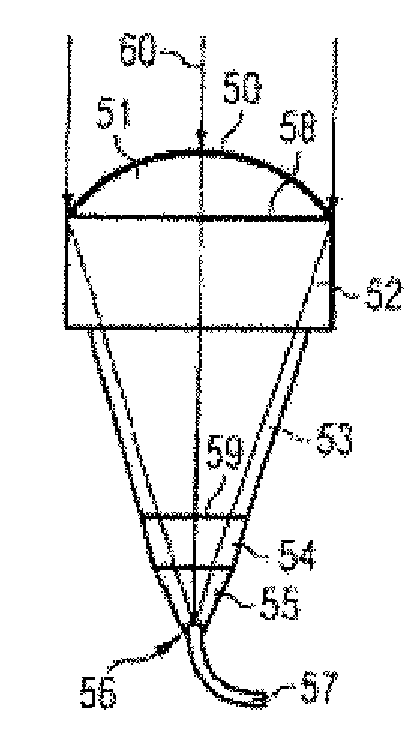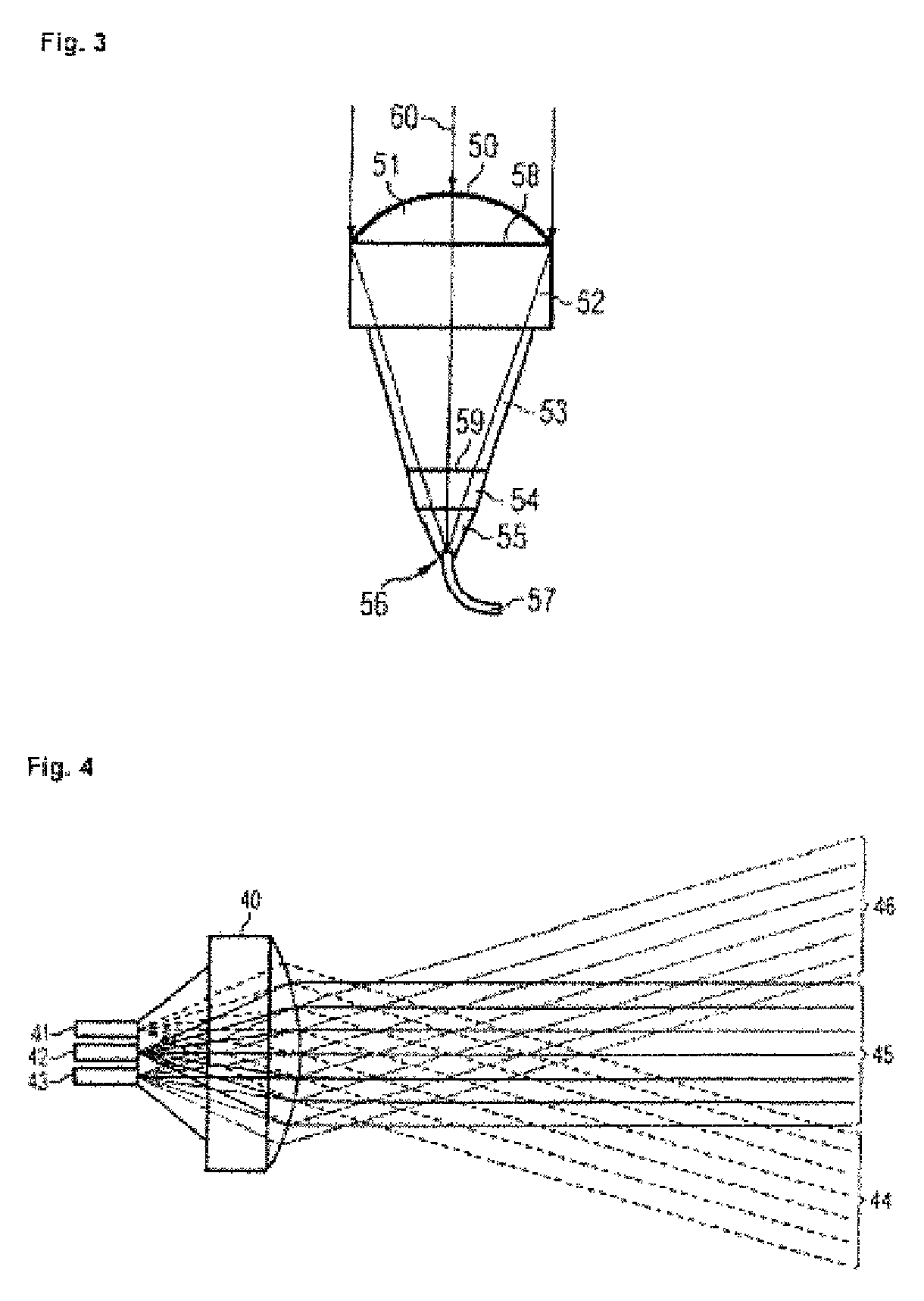Optical rotary transmitter
a rotary transmitter and optical technology, applied in the field of optical rotary transmitters, can solve the problems of high signal attenuation, high cost, complex design, etc., and achieve the effect of simple design
- Summary
- Abstract
- Description
- Claims
- Application Information
AI Technical Summary
Benefits of technology
Problems solved by technology
Method used
Image
Examples
Embodiment Construction
[0036]FIG. 1 shows the essential part of fundamentally any rotator transmitter. It includes a first light coupler 10 and a second light coupler 20. The two light couplers 10, 20 are arranged opposite one another. The first light coupler 10 is assigned to a first part (now shown) of the rotary transmitter, while the second light coupler 20 is assigned to a second part of this rotary transmitter, which can rotate about a shared central axis 30 in relation to the first part. The first light coupler 10 comprises a first collimator arrangement 16 in a housing 12. Similarly, the second light coupler 20 comprises a second collimator arrangement 26 in a housing 22. The first collimator arrangement 16 consists of collimators 11 distributed uniformly and adjacent to one another on the circumference of a circle. The second collimator arrangement 26 consists of similarly arranged collimators 21. The collimators send and receive light essentially in parallel with the shared central axis 30, whic...
PUM
 Login to View More
Login to View More Abstract
Description
Claims
Application Information
 Login to View More
Login to View More - R&D
- Intellectual Property
- Life Sciences
- Materials
- Tech Scout
- Unparalleled Data Quality
- Higher Quality Content
- 60% Fewer Hallucinations
Browse by: Latest US Patents, China's latest patents, Technical Efficacy Thesaurus, Application Domain, Technology Topic, Popular Technical Reports.
© 2025 PatSnap. All rights reserved.Legal|Privacy policy|Modern Slavery Act Transparency Statement|Sitemap|About US| Contact US: help@patsnap.com



